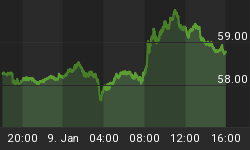This week's Chart of the Week video looks at yields on the 10 year Treasury Bond (symbol: $TNX.X), and asks: "What should we be afraid of?"
So let's get technical.
Our basic set up is shown. This is a weekly chart. The red and black dots are key pivot points or the best areas of buying and selling. And this is your 40 week moving average.
Ever since clearing the low yield pivot point from 2008, yields have been moving aggressively higher ever since. (As an aside, we first chronicled this key point in a video back on May 12, 2013). After breaking above this key level, which was at 2.092% yield on the 10 year, yields have moved to the next resistance zone which is between 2.475% to 2.619%. I would suspect yields to consolidate or rest here at best because they are much overbought at present.
Of course, the spike in yields has investors in a tizzy as it appears to be a signal that the Federal Reserve is removing the monetary trough as the economy is on a firmer footing. Certainly, that is a possibility as stated in the May 12th video: "A key bogie for Treasury yields that would signal the economy is really on the mend is the late 2008 key pivot point low." So maybe we should take Bernanke at face value. The economy is improving and the Fed will begin its taper sooner rather than later.
But there is another fear out there, and one that the markets haven't confronted yet. What happens if yields break through current resistance levels and go even higher? This is certainly possible (at least based upon present technical considerations), and if it were to occur, yields would spike to 3.373% on the 10 year Treasury bond. I think this is the real risk for Treasury yields as there is a lot of room between current resistance levels and the next level up.
At present, rising yields are all the talk on Wall Street bubble vision. Yields should consolidate their recent move. A move higher looks possible, and if it occurs, it will be a doozy. This is what investors should be afraid of!
TacticalBeta offers a 21 day FREE TRIAL (no credit card required): 1 CLICK SIGN UP















